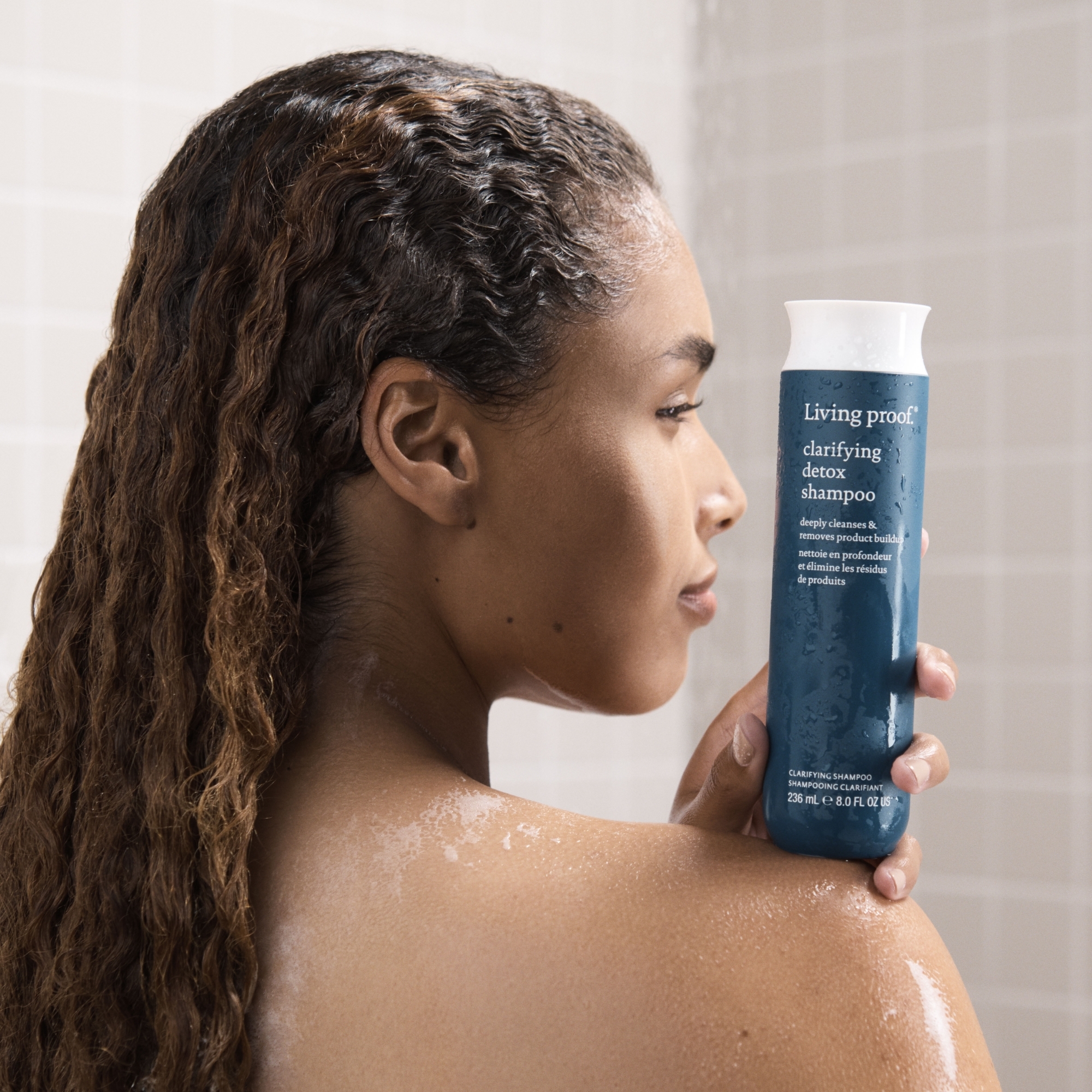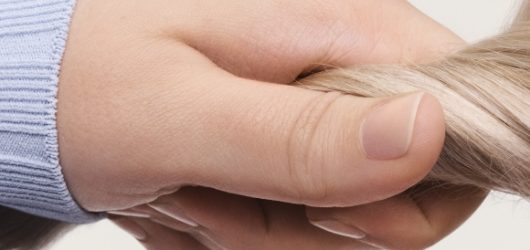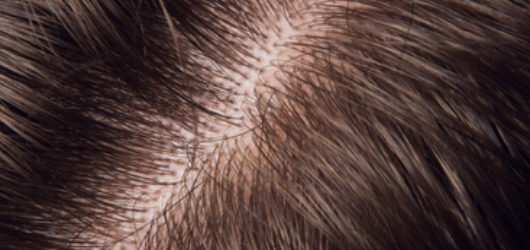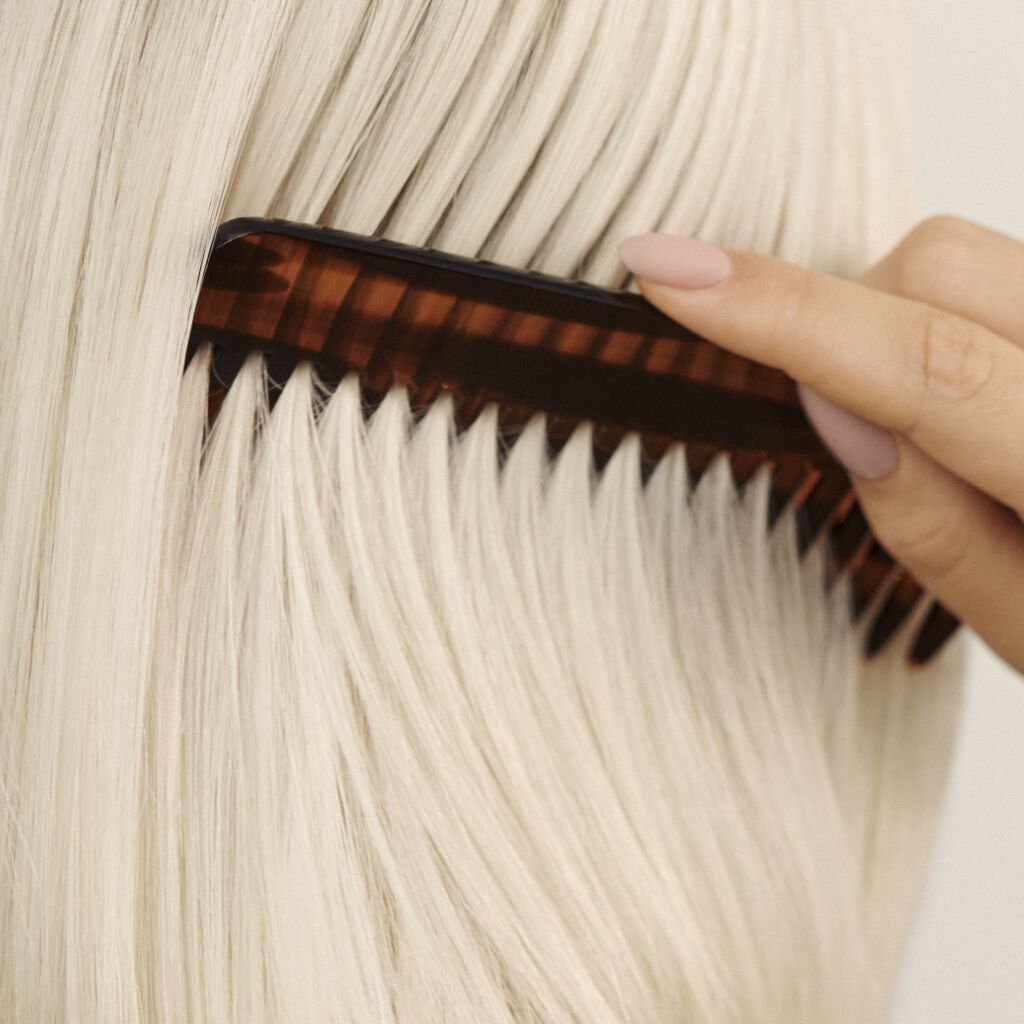
How to Fix Bleach Damaged Hair
If you’ve ever dreamt of flaxen, platinum, or honey-hued tresses—or if you’ve ever rocked a bright pink or blue—you might also be familiar with the hair bleaching process. You may also love to regularly bleach and color your hair all the colors of the rainbow.
In the world of hair coloring, is bleach bad for your hair?
Bleaching your natural hair can help you achieve your ideal shade of blonde hair or create a blank canvas for other vibrant hues. But over time, bleach damage can also leave your blonde hair dry and dull.
After a bleaching session, you may notice that your hair tangles easily, shows an influx of split ends, and sheds more frequently. These are all common signs of bleaching damage.
But for those wondering how to fix damaged bleached hair, there’s good news: there are simple steps you can take like using a hair bond treatment to restore your hair to health. To start, you’ll want to learn what treatments your bleach damaged hair could benefit from—and which ones to avoid.
#1 Use Heat Protectant
Similar to bleaching, heat styling can also be harsh on your hair. If you want to use heat styling tools for a special occasion, you can mitigate their damage by applying a heat protectant first.
Heat protectants provide a barrier between your bleach damaged hair and the heat. Many heat protectant sprays also contain special ingredients that can seal your hair’s cuticles and preserve its moisture in the face of high temperatures.
Similarly, you’ll want to be cautious about bleaching heat damaged hair to help prevent excessively dry or brittle hair. Our bond building treatment products can help you future-proof your hair against damage.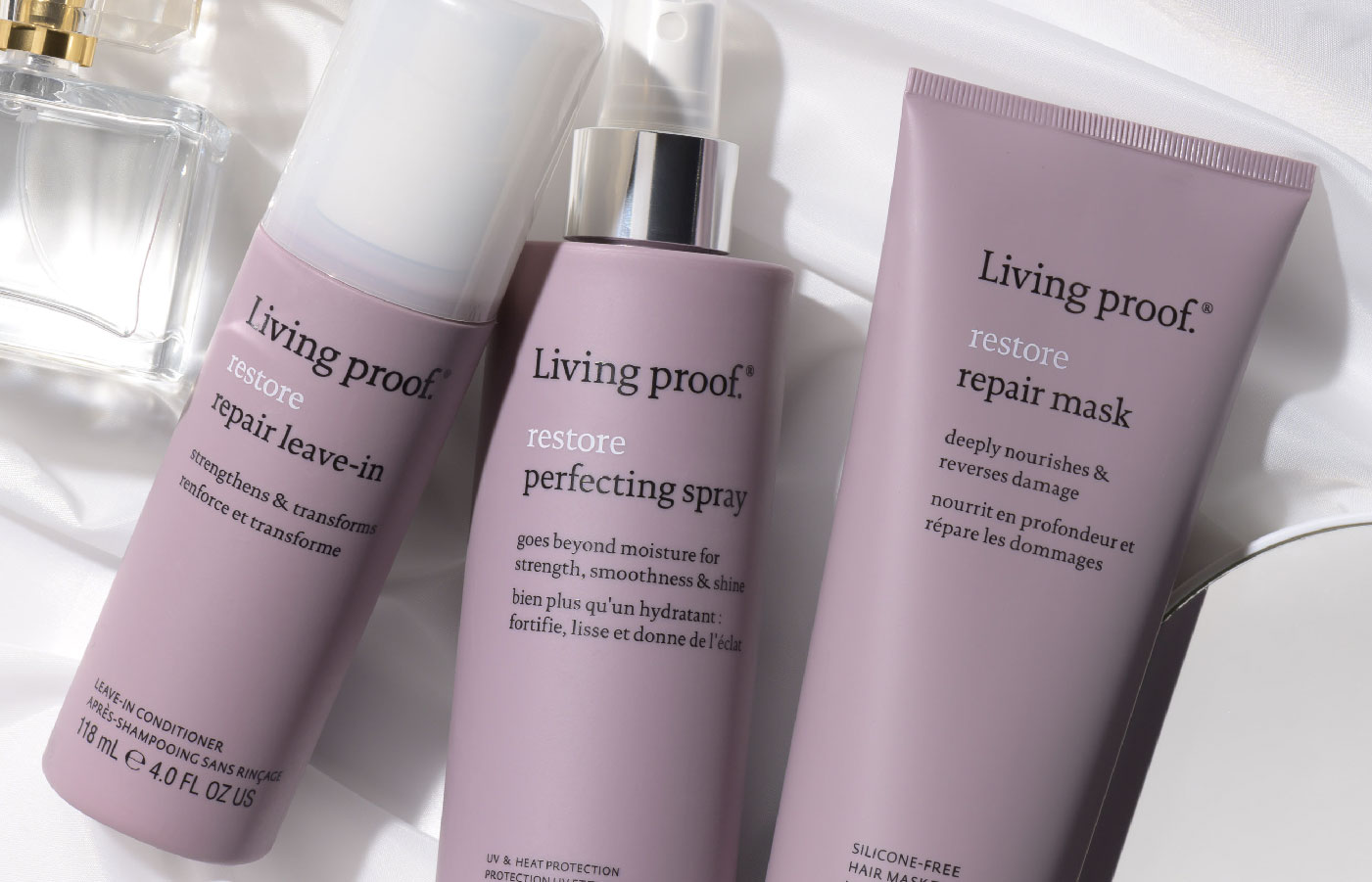
#2 Apply a Restorative Hair Bond Treatment
When you bleach your hair, the goal is to remove its natural hair color or melanin. In doing so, however, hair bleach opens up the cuticles of your hair strands, causing damage to its fibers and a loss of proteins. Open cuticles make your hair much more prone to breakage, split ends, and frizziness.
While you can’t undo all the damage bleach does, the fix here is to supply your hair with some added strength to prevent any additional breakage and achieve smoother strands. Studies have shown restorative hair bond treatments can effectively help repair the integrity of your hair by strengthening your cuticles on a molecular level.
Fortunately, you can find restorative treatments in many formulas, including:
- Hair masks
- Shampoos
- Conditioners
- Leave-in conditioners
- Protective hair oil
To enhance the benefits of a weekly bond builder, look for a daily hair repair treatment like our Healthy Hair Perfector to reduce the appearance of split ends and improve manageability.
#3 Follow Proper Hair Brushing Protocols
You probably brush your hair every day—but for bleach damaged hair, it’s important to brush it the right way. Some brushing techniques can amplify bleached hair’s breakage more than others.
Here are a few important brushing guidelines to follow if you have bleached hair:
- Don’t brush your hair while it’s wet – Wet hair is more delicate and prone to breakage than dry hair. You can use a wide-tooth comb to gently detangle your hair when it’s wet. Otherwise, it’s a good idea to let your locks dry a little before brushing them.
- Use a detangling spray – Whether your hair is wet or dry, tugging through tangles can cause an outbreak of split ends. Fortunately, a detangling spray can smooth out your tangles before you brush.
- Brush from the bottom up – As you brush through your hair, start at the ends and gradually work yourself up to the roots. Doing so can make it easier to gently undo any knots you encounter along the way.
- Use a gentle brush – Since bleached, damaged hair is more prone to tangling, you may also want to invest in a detangling hair brush. Detangling brushes can help to tackle your tangles without causing excessive hair breakage.
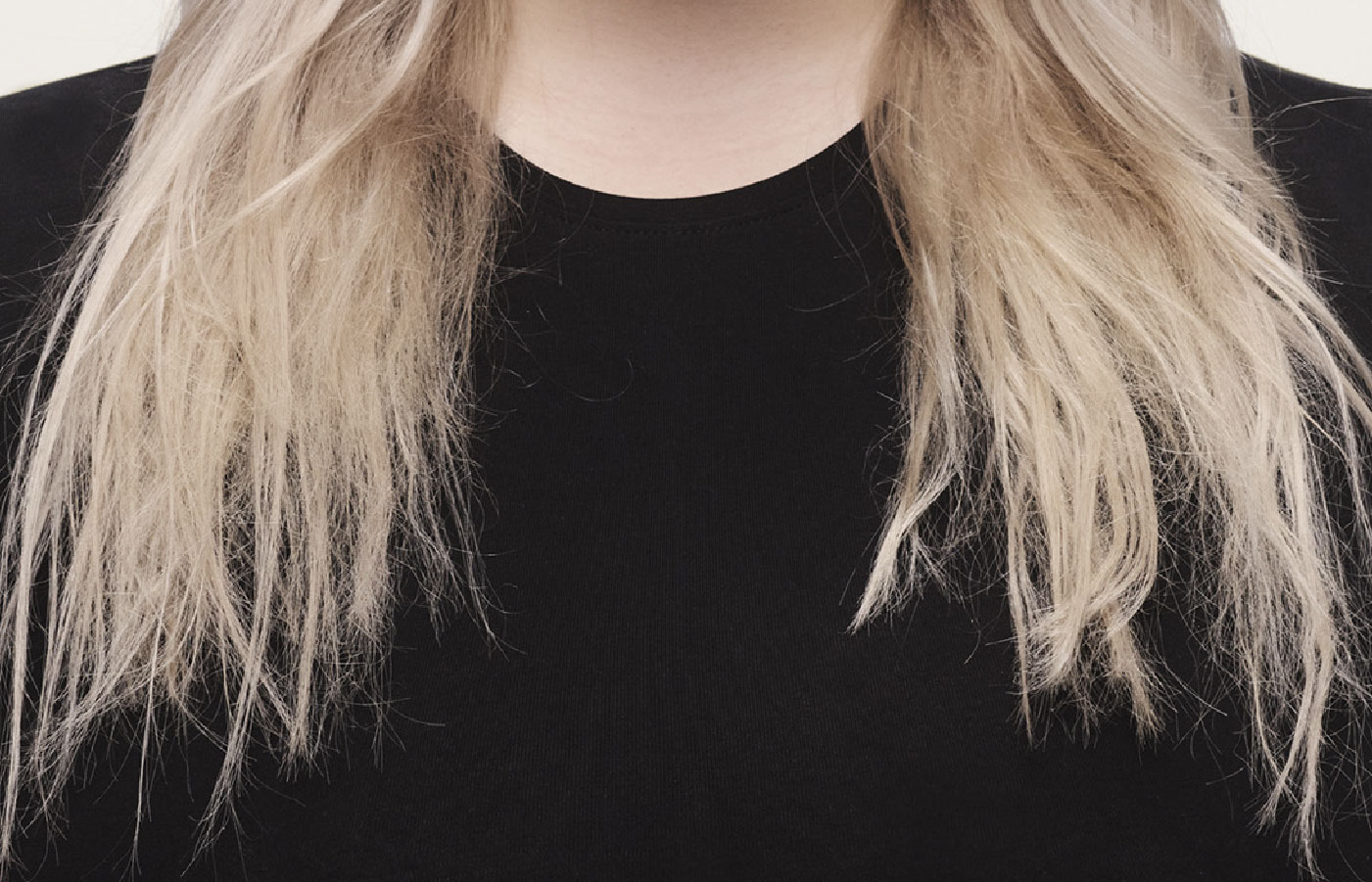
#4 Go in For Regular Trims
If you’ve been putting off your haircut or trying to grow out your tresses, you might think you’re giving your bleached locks a break. However, trimming your ends can help mitigate some of the hair damage caused by bleach.
The reason? Since bleach can weaken and dry out your hair, it can cause you to experience more split ends. Split ends may only affect the tips of your hair at first, but if left untrimmed, they can work their way up your hair strands.
By eliminating split ends sooner than later, regular trims can protect the integrity of your hair. In turn, you can avoid an influx of frizziness and flyaways.
#5 Treat Your Tresses to High-Quality Products
Before you started bleaching, you may have been able to get away with using bargain-brand hair products. However, bleached hair requires specialized TLC to bring it back to optimum hair health.
As a result, you may want to invest in higher-quality products:
- Shampoos – To cleanse your bleached hair, make sure to use a nourishing shampoo that’s specifically formulated for chemically-treated hair. Hair chelating is also a common practice you may consider.
- Conditioners – After going through such a drying process, bleached hair lacks the moisture it once had. As a result, you’ll want to restore your hair’s moisture by using a deeply hydrating conditioner.
- Hair masks – A hair mask can nourish your hair deeply and rebuild its internal structure. Simply apply a high-quality hair mask a few times a month as a part of your self-care routine. Use a deep conditioning hair mask with hair-friendly oils to hydrate bleached damaged hair. It moisturizes straight down to the hair cuticle.
Not only can these types of hair products help to protect your hair’s color, but they can also work double-time to moisturize, nourish, and repair your hair’s strands. These effects can result in faster hair growth and shinier tresses in the long term.
While you allow your stressed tresses to rest, you still want your hair to look good while it recovers.
Restore Your Hair’s Health with Living Proof
As you can see, you can enjoy beautiful bleached hair without dealing with hair damage—you just need to care for your hair properly to protect it from future damage.
Here at Living Proof, our haircare line is informed by the latest bio-science. From our deep-conditioning shampoos to our powerful hair bond treatments, we have everything you need to help restore your hair’s vitality and shine.
Give your bleached hair the TLC it deserves and explore our line of science-backed hair products online today to get that healthy hair you’ve always dreamed of.
- International journal of cosmetic science. The physical and chemical disruption of human hair after bleaching – studies by transmission electron microscopy and redox proteomics. https://pubmed.ncbi.nlm.nih.gov/30229956/
- Journal of Cosmetic Science. The effect of various cosmetic pretreatments on protecting hair from thermal damage by hot flat ironing. https://pubmed.ncbi.nlm.nih.gov/21635854/
- International Journal of Biological Macromolecules. Structural investigation on damaged hair keratin treated with α,β-unsaturated Michael acceptors used as repairing agents. https://www.sciencedirect.com/science/article/abs/pii/S0141813020351321
- Cleveland Clinic. Can Wet Hair Actually Make You Sick? https://health.clevelandclinic.org/can-wet-hair-make-you-sick/
- International Journal of Trichology. Hair Cosmetics: An Overview. https://www.ncbi.nlm.nih.gov/pmc/articles/PMC4387693/
- Healthline. The Best Oils for Treating Dry Hair. https://www.healthline.com/health/oil-for-dry-hair

